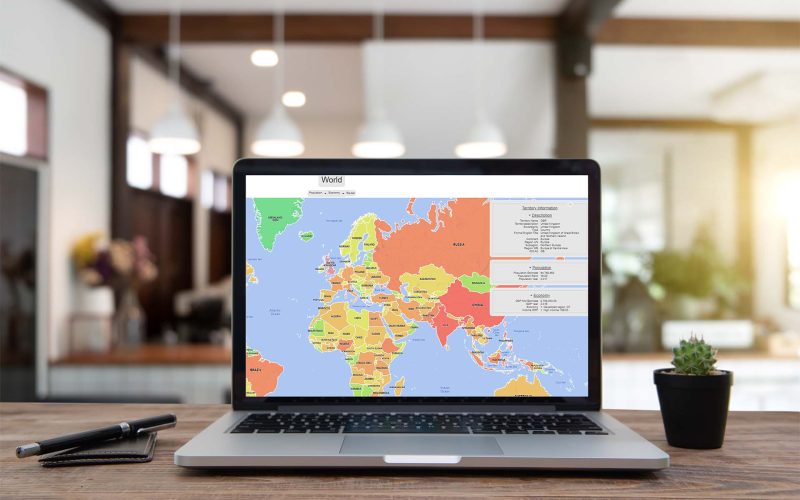A poorly balanced territory can result in a rep needing help to meet their quota. Not only will this cost the company money, but it can also hurt morale.
Sales mapping software helps balance workloads by analyzing data on an aggregate level and assigning sales territories accordingly. This allows managers to optimize territories and coach their teams to a higher level of performance.
Increased Productivity
Using mapping software for sales territory management gives sales leaders and ops experts a quick view of all the data involved in territory allocation. This allows them to quickly and accurately determine if the territories are well-balanced and fair and will help each rep achieve their quotas.
Often, the most common sales territory management problems are caused by gaps or overlaps in coverage that result from unassigned accounts or new opportunities. Using mapping software for sales territory management enables managers to easily identify and address these issues quickly by reallocating territory boundaries or even the distribution of accounts between reps.
Another great feature of sales mapping software is its data visualization capabilities. When data is plotted on a map, it’s easy to see how each sales territory performs and what areas need more attention or addressed with further training or development.
Mapping software also makes it easy to update maps as changes occur, such as adding a new territory or accounts. This saves time as the mapping tool will automatically reflect these changes without requiring a lot of manual data manipulation or back-and-forth communication. This automated process is also useful for large teams that handle many accounts and must ensure they have a streamlined and efficient way to manage their territory.
Increased Efficiency
The right sales territory mapping software makes it easy for managers to monitor rep performance based on quotas, targets, and other criteria. These tools can also help with forecasting by aggregating data plotted on a map and isolating high or low-performance areas. This allows you to see if a certain region may require additional attention.
Using mapping software to design territories can be a huge improvement over the traditional method of hand-drawn maps or spreadsheets. This tool can quickly and easily update and align territories as the company grows or changes. Moreover, it can provide insights into the current state of the territories, such as the number of accounts in each territory, their current pipeline opportunities, and historical revenue performance.
Another benefit of a sales territory mapping solution is that it makes it easy for the entire team to view their area of responsibility. This is particularly helpful for companies with national or global sales teams. In addition, the tool can be used to share specific points of interest, such as customer locations or sales meetings with other departments.
Enhanced Productivity
Unlike the point-in-time snapshot you get with an Excel sheet, territory mapping software provides ongoing visibility. It’s easier to keep tabs on new opportunities, account changes, and how your reps perform within their territories. This keeps the momentum moving and gives your sales team more time to sell.
Well-balanced territories are essential for meeting quotas and growing revenue. A territory that is too small can result in a lack of opportunities to meet quota and can make your salespeople feel under-served, leading to frustration and possibly even resentment. On the other hand, a territory that’s too large can mean they spend less time selling because they’re juggling too many accounts and potential customers.
With a mapping tool integrated with your CRM, you can easily create sales territories based on data insights, including market characteristics, business size, customer revenue, and product requirements. This helps ensure that all sales territories are balanced and fair, allowing you to optimize routes and reduce windshield time while getting the right people in front of the most qualified prospects and customers.
By integrating sales territories with your CRM, you can also clearly communicate areas of responsibility to your teams. This prevents confusion and ensures everyone knows where they’re supposed to be and who they’re working with daily.
Increased Revenue
An effective sales territory mapping process also ensures reps spend more time with high-value customers and prospects. This translates into more revenue for the business, which can be used to invest in better products, higher-paid staff, and increased marketing and sales operations.
Communicated Areas of Responsibility
When territories are mapped effectively, each team member has an individual area of focus. This helps eliminate confusion about handling tasks, allowing each team member to log in and see only the information about their responsibilities.
Dynamic Territory Adjustments
Territory mapping software can help your organization evaluate current performance and make improvements on the fly. For example, suppose one territory is significantly unbalanced regarding the number of customer accounts compared to another. In that case, you can use sales mapping to readjust and relocate these territories effectively.
With sales mapping software, you can create maps that display the locations of your customer and prospect profiles along with important data like sales numbers. These maps can be easily shared with all relevant stakeholders across the business. This makes it easy to compare and evaluate territory performance, which can then be used to make informed decisions on optimizing revenue generation within each territory.













